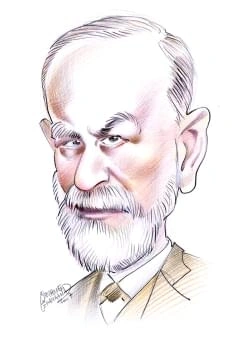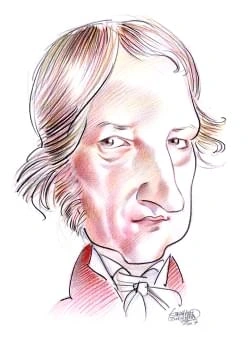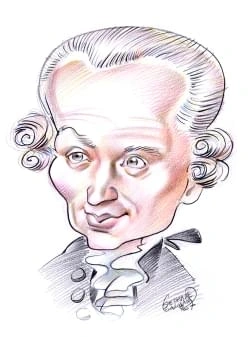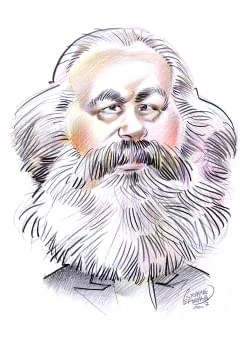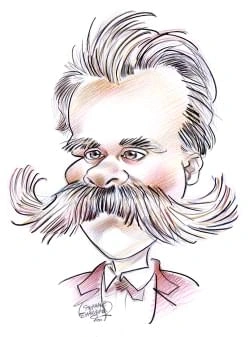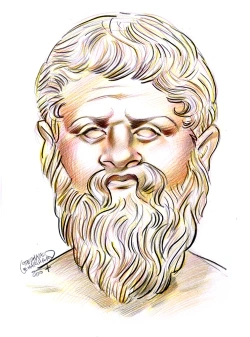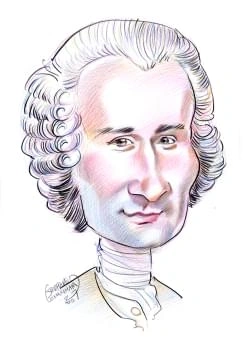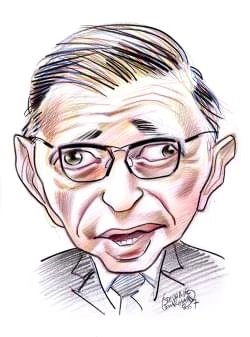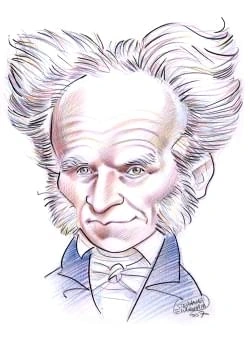234 résultats pour "amount"
-
Adolf Hitler
I
INTRODUCTION
Adolf Hitler (1889-1945), German political and military leader and one of the 20th century's most powerful dictators.
A Economic Collapse At the end of World War I, the Allies (those countries who had fought against Germany) had demanded that Germany pay reparations—that is, payments for wardamages. The government refused to pay all that was demanded by the Allies. When Germany failed to pay enough, France and Belgium occupied the coal mines in theRuhr industrial area in west central Germany in January 1923. In protest, the German government halted all reparation payments and called for passive resistance by a...
-
Adolf Hitler.
A Economic Collapse At the end of World War I, the Allies (those countries who had fought against Germany) had demanded that Germany pay reparations—that is, payments for wardamages. The government refused to pay all that was demanded by the Allies. When Germany failed to pay enough, France and Belgium occupied the coal mines in theRuhr industrial area in west central Germany in January 1923. In protest, the German government halted all reparation payments and called for passive resistance by a...
-
Adolf Hitler .
A Economic Collapse At the end of World War I, the Allies (those countries who had fought against Germany) had demanded that Germany pay reparations—that is, payments for wardamages. The government refused to pay all that was demanded by the Allies. When Germany failed to pay enough, France and Belgium occupied the coal mines in theRuhr industrial area in west central Germany in January 1923. In protest, the German government halted all reparation payments and called for passive resistance by a...
-
Roman Empire - history.
the master of Rome. Three years later the Senate proclaimed him Augustus, the supreme ruler. III THE EMPIRE UNDER AUGUSTUS Roman Emperor AugustusAugustus, the first Roman emperor, brought peace, order, and prosperity to Rome after the civil wars that followed the assassinationof Roman leader Julius Caesar. Caesar had adopted the young Octavian, later known as Augustus, as his heir. After a victory overMark Antony and Cleopatra at Actium, Augustus had absolute power over the entire Roman Empire....
-
Native American Policy.
of white settlement dominated policy during the second quarter of the 19th century. IV REMOVAL PERIOD The idea of moving Native Americans to a different part of the country was not new. After the Louisiana Purchase in 1803, President Thomas Jefferson had suggestedthat tracts of land in this vast new territory could be given to native peoples if they agreed to cede their lands in the eastern part of the country. Transfers occurred in apiecemeal way, but no consistent removal program developed u...
-
Jupiter (planet) - astronomy.
Beneath the supercritical fluid zone, the pressure reaches 3 million Earth atmospheres. At this depth, the atoms collide so frequently and violently that the hydrogenatoms are ionized—that is, the negatively charged electrons are stripped away from the positively charged protons of the hydrogen nuclei. This ionization results in asea of electrically charged particles that resembles a liquid metal and gives rise to Jupiter’s magnetic field. This liquid metallic hydrogen zone is 30,000 to 40,000 k...
-
Vermont - geography.
Forests cover 78 percent of Vermont. Most of the trees are deciduous, principally the maple, elm, birch, beech, oak, hickory, ash, cherry, and butternut. The state treeis the sugar maple, which provides Vermont’s famous maple syrup. Conifers are common in some mountain areas and include mainly the white pine, red spruce,hemlock, and cedar. A great variety of ferns have been found within the state. Among the more common wildflowers that grow in Vermont are anemones, arbutuses,violets, lilacs, dai...
-
Vermont - USA History.
Forests cover 78 percent of Vermont. Most of the trees are deciduous, principally the maple, elm, birch, beech, oak, hickory, ash, cherry, and butternut. The state treeis the sugar maple, which provides Vermont’s famous maple syrup. Conifers are common in some mountain areas and include mainly the white pine, red spruce,hemlock, and cedar. A great variety of ferns have been found within the state. Among the more common wildflowers that grow in Vermont are anemones, arbutuses,violets, lilacs, dai...
-
-
Uzbekistan - country.
E Environmental Issues The evaporation of the Aral Sea is one of the worst ecological disasters in the world. The Aral has shrunk so much that it now holds only about one-fifth the volume ofwater it held in 1960. The shrinkage is due to irrigation withdrawals from the Amu Darya and Syr Darya, a practice that began on a massive scale in the early 1960s aspart of the Soviet Union’s ill-conceived drive to increase cotton yields in Central Asia. Growing cotton in the naturally arid and saline soil...
-
Terrorism.
exploitation, ethnic discrimination, and religious persecution. Perceived inequities in the distribution of wealth and political power have led some terrorists to attempt tooverthrow democratically elected governments. To achieve a fairer society, they would replace these governments with socialist or communist regimes. Left-wingterrorist groups of the 1960s and 1970s with such aims included Germany’s Baader-Meinhof Gang, Italy’s Red Brigades, and the Weather Underground ( see Weathermen) in the...
-
Democratic Republic of the Congo - country.
Except in the high elevations, the country’s climate is very hot and humid. The average annual temperature in the low central area is about 27°C (about 80°F).Temperatures are considerably higher in February, the hottest month. At altitudes above about 1,500 m (about 5,000 ft) the average annual temperature is about 19°C(about 66°F). Average annual rainfall is about 1,500 mm (about 60 in) in the north and about 1,300 mm (about 50 in) in the south. Frequent heavy rains occur fromApril to November...
-
Wisconsin (state) - geography.
-6° C (22° F) in the southeast, along the Lake Michigan shore. During winter extremely cold weather persists for several weeks at a time. C2 Precipitation Average annual precipitation ranges from 700 to 800 mm (28 to 32 in). Rainfall is generally heaviest during the spring and summer, and snowfall is generally moderatein the south, but can be quite heavy in the north. Thunderstorms, sometimes accompanied by devastating tornadoes, are common in spring and summer, particularly inthe southern part...
-
Wisconsin (state) - USA History.
-6° C (22° F) in the southeast, along the Lake Michigan shore. During winter extremely cold weather persists for several weeks at a time. C2 Precipitation Average annual precipitation ranges from 700 to 800 mm (28 to 32 in). Rainfall is generally heaviest during the spring and summer, and snowfall is generally moderatein the south, but can be quite heavy in the north. Thunderstorms, sometimes accompanied by devastating tornadoes, are common in spring and summer, particularly inthe southern part...
-
Utah - geography.
Temperatures decrease from the south to the north in the state. In the mountains the average temperature drops about 0.5°C (about 1°F) for every about 300 m(about 1,000 ft) rise in elevation. Average July temperatures range from less than 16°C (60°F) in the mountains to more than 27°C (80°F) in a few locations insouthern Utah. At Salt Lake City average July temperatures range from a low of 18°C (64°F) to a high of 33°C (92°F). There is a great variation between daytime andnighttime temperatures,...
-
Utah - USA History.
Temperatures decrease from the south to the north in the state. In the mountains the average temperature drops about 0.5°C (about 1°F) for every about 300 m(about 1,000 ft) rise in elevation. Average July temperatures range from less than 16°C (60°F) in the mountains to more than 27°C (80°F) in a few locations insouthern Utah. At Salt Lake City average July temperatures range from a low of 18°C (64°F) to a high of 33°C (92°F). There is a great variation between daytime andnighttime temperatures,...
-
South Carolina - geography.
(20° F) or lower, occur each winter. July temperatures average 27° C (80° F) in most of the state, with temperatures in the lower 20°s C (lower 70°s F) in themountains. Except in the mountains, summer daytime highs throughout South Carolina often enter the lower 30°s C (lower 90°s F). The temperature in July in Columbiaranges from 21° to 33° C (70° to 92° F). D2 Precipitation Central South Carolina has an average annual precipitation (both rainfall and snowfall) of 1,140 mm (45 in). Greater amo...
-
-
South Carolina - USA History.
(20° F) or lower, occur each winter. July temperatures average 27° C (80° F) in most of the state, with temperatures in the lower 20°s C (lower 70°s F) in themountains. Except in the mountains, summer daytime highs throughout South Carolina often enter the lower 30°s C (lower 90°s F). The temperature in July in Columbiaranges from 21° to 33° C (70° to 92° F). D2 Precipitation Central South Carolina has an average annual precipitation (both rainfall and snowfall) of 1,140 mm (45 in). Greater amo...
-
Medicine.
C Other Health Professionals Medicine is not restricted to physicians. A wide variety of health care practitioners work in this exciting field. By far the largest professional group is nurses. Registerednurses help physicians during examinations, treatment, and surgery. They observe, evaluate, and record patients’ symptoms, administer medications, and provideother care ( see Nursing). Nurse practitioners perform basic duties once reserved for physicians, such as diagnosing and treating common i...
-
Minnesota - geography.
C Climate Minnesota’s climate is classified as humid continental because normally there is a sufficient amount of precipitation to provide at least some surplus for runoff, andbecause Minnesota’s temperature conditions are largely controlled by its location in the interior of the large landmass of North America. The result is extreme seasonaltemperature variations. The average January temperature is about -18°C (about 0°F) in the northwest and about -10°C (about 14°F) in the south, but thetherm...
-
Minnesota - USA History.
C Climate Minnesota’s climate is classified as humid continental because normally there is a sufficient amount of precipitation to provide at least some surplus for runoff, andbecause Minnesota’s temperature conditions are largely controlled by its location in the interior of the large landmass of North America. The result is extreme seasonaltemperature variations. The average January temperature is about -18°C (about 0°F) in the northwest and about -10°C (about 14°F) in the south, but thetherm...
-
Ontario - Geography.
governed Ontario’s initial settlement and development. The province’s most important river is the St. Lawrence. Its route was much improved and enlarged by dredgingand canal building in the mid-20th century. This enabled large ocean-going vessels to reach Great Lake ports ( see St. Lawrence Seaway). The Ottawa River was an important early route to the interior for fur traders and timber merchants. The Niagara River, because of its falls, is a great center of hydroelectric power as well as aninte...
-
Ontario - Canadian History.
governed Ontario’s initial settlement and development. The province’s most important river is the St. Lawrence. Its route was much improved and enlarged by dredgingand canal building in the mid-20th century. This enabled large ocean-going vessels to reach Great Lake ports ( see St. Lawrence Seaway). The Ottawa River was an important early route to the interior for fur traders and timber merchants. The Niagara River, because of its falls, is a great center of hydroelectric power as well as aninte...
-
Egypt - country.
Egypt has a wide variety of mineral deposits, some of which, such as gold and red granite, have been exploited since ancient times. The chief mineral resource ofcontemporary value is petroleum, found mainly in the Red Sea coastal region, at Al ‘Alamayn (El ‘Alamein) on the Mediterranean, and on the Sinai Peninsula. Otherminerals include phosphates, manganese, iron ore, and uranium. Natural gas is also extracted. D Plants and Animals The vegetation of Egypt is confined largely to the Nile Delta,...
-
Western Philosophy.
the popular belief in personal deities, but he failed to explain the way in which the familiar objects of experience could develop out of elements that are totally differentfrom them. Anaxagoras therefore suggested that all things are composed of very small particles, or “seeds,” which exist in infinite variety. To explain the way in whichthese particles combine to form the objects that constitute the familiar world, Anaxagoras developed a theory of cosmic evolution. He maintained that the activ...
-
-
South Africa - country.
The major soil zones are conditioned largely by climatic factors. In the semiarid north and west, soils are alkaline and poorly developed. In the southern part of WesternCape Province, rain falls mostly in the winter months, and soils there form slowly and are generally thin and immature. The moderate temperatures and summer rainfallof the High Veld and eastern coastal areas create conditions for more productive organic decomposition, leading to dark, fertile soils, or chernozems, similar to tho...
-
Europe .
D Vegetation Although much of Europe, particularly the west, was originally covered by forest, the vegetation has been transformed by human habitation and the clearing of land.Only in the most northerly mountains and in parts of north central European Russia has the forest cover been relatively unaffected by human activity. On the otherhand, a considerable amount of Europe is covered by woodland that has been planted or has reoccupied cleared lands. The largest vegetation zone in Europe, cuttin...
-
Europe - Geography.
D Vegetation Although much of Europe, particularly the west, was originally covered by forest, the vegetation has been transformed by human habitation and the clearing of land.Only in the most northerly mountains and in parts of north central European Russia has the forest cover been relatively unaffected by human activity. On the otherhand, a considerable amount of Europe is covered by woodland that has been planted or has reoccupied cleared lands. The largest vegetation zone in Europe, cuttin...
-
Fire - chemistry.
were usually natural caves. Eventually people learned to dip branches in pitch to form torches. They created crude lamps by filling a hollowed out piece of stone withmoss soaked in oil or tallow (a substance derived from animal fat). By cooking with fire, prehistoric people made the meat of the animals they killed more palatable and digestible. They learned to preserve meat by smoking it over a fire,vastly decreasing the danger of periodic starvation. Cooking also enabled them to add some for...
-
Infrared Space Observatory - astronomy.
know how often these disks occur around stars to help them understand how common it is for planets to form. ISO found several previously unknown stars with disks.ISO also detected olivine, a silicate mineral found in Earth’s own rocky mantle, in the comet Hale-Bopp, which was visible from Earth in 1996 and 1997. The discovery ofolivine in the comet suggests that the comet and Earth have a similar origin. The satellite also detected the first evidence of water outside of the solar system inplanet...
-
Color
I
INTRODUCTION
Color
© Microsoft Corporation.
The colors that absorb light of the additive primary colors are called subtractive primary colors. They are magenta (purplish-pink), which absorbs green; yellow, whichabsorbs blue; and cyan (light greenish-blue), which absorbs red. Thus, if a green light is thrown on a magenta pigment, the eye will perceive black. These subtractiveprimary colors are also called the pigment primaries. They can be mixed together in varying amounts to match almost any hue. If all three are mixed in about equalamoun...
-
Chemistry - chemistry.
parts of oxygen by weight, which is a ratio of about 1 to 8, regardless of whether the water came from the Mississippi River or the ice of Antarctica. In other words, acompound has a definite, invariable composition, always containing the same elements in the same proportions by weight; this is the law of definite proportions. Many elements combine in more than one ratio, giving different compounds. In addition to forming water, hydrogen and oxygen also form hydrogen peroxide.Hydrogen peroxide h...
-
Nuclear Energy
I
INTRODUCTION
Gundremmingen Nuclear Power Plant, Germany
The first of three boiling-water nuclear reactors at Germany's Gundremmingen plant began operating in 1966 but was
permanently shut down after being decommissioned in 1983.
such as ¯U is induced by the absorption of a neutron as in producing cesium-140, rubidium-93, three neutrons, and 200 MeV, or 3.2 × 10 -11 J (7.7 × 10 -12 cal). A nuclear fission reaction releases 10 million times as much energy as is released in a typical chemical reaction. See Nuclear Chemistry. III NUCLEAR ENERGY FROM FISSION The two key characteristics of nuclear fission important for the practical release of nuclear energy are both evident in equation (2). First, the energy per fiss...
-
-
Steam Engine.
wear caused by this pressure, steam-engine valves are frequently made in a cylindrical form entirely enclosing the piston, so that the pressure is equal all around thevalve and friction is minimized. The development of this type of valve is attributed to the American inventor and manufacturer George Henry Corliss. In other types ofslide valves, the moving portion of the valve is designed so that steam does not press directly on the back of the valve. The linkage between the piston of the engine...
-
Interstellar Matter - astronomy.
silhouette of a cloud of dust. At other times, it blocks only a percentage of the light from behind it, a process known by astronomers as extinction . The long, narrow dark lanes in the Milky Way as seen from Earth are examples of extinction. The amount of extinction is different for different wavelengths of light. A2 Reddening Starlight that does not get completely absorbed by interstellar dust can still be changed by the dust’s effects. As light passes through less dense patches of interstel...
-
Laser.
their atoms into laser light. Consequently, they are the most powerful continuous wave (CW) lasers—that is, lasers that emit light continuously rather than in pulses. C Liquid Lasers The most common liquid laser media are inorganic dyes contained in glass vessels. They are pumped by intense flash lamps in a pulse mode or by a separate gas laserin the continuous wave mode. Some dye lasers are tunable, meaning that the color of the laser light they emit can be adjusted with the help of a prism lo...
-
Gabon - country.
government is engaged in preservation and reforestation programs. The fish catch in 2005 was 43,941 metric tons. C Mining Mining has developed rapidly since Gabon’s independence in 1960. Annual production of extremely high-grade manganese ore, from Moanda in the southeast, was1,090,000 metric tons in 2004. The rich deposits of iron ore located at Mekambo and Bélinga in the northeast have reserves estimated at more than 500 million metrictons. Exploitation of the iron ore has been hampered by th...
-
Canadian Pacific Railway - Canadian History.
roads constructed inland from the lakeshore. However, this changed with the outbreak in Saskatchewan of the Northwest Rebellion by Louis Riel and his supportersagainst the authority of the Canadian government in March 1885. Despite the fact that the railway was not completed, a contingent of troops was able to reachWinnipeg from Montréal in only seven days, much faster than they could have gone overland, and get from there to Saskatchewan in time to successfully put down therebellion. This actio...
-
Federal Reserve System.
and their powers were also expanded. For example, discount rates now had to be approved periodically by the board. Sales and purchases of governmentsecurities—the open-market operation that previously had been managed solely at the discretion of the presidents of the reserve banks—were centralized in the FederalOpen Market Committee (FOMC), consisting of the seven governors, the president of the Federal Reserve Bank of New York, and four other reserve bank presidentsserving on a rotating basis....
-
Physics
I
INTRODUCTION
Physics, major science, dealing with the fundamental constituents of the universe, the forces they exert on one another, and the results produced by these forces.
Starting about 1665, at the age of 23, Newton enunciated the principles of mechanics, formulated the law of universal gravitation, separated white light into colors,proposed a theory for the propagation of light, and invented differential and integral calculus. Newton's contributions covered an enormous range of naturalphenomena: He was thus able to show that not only Kepler's laws of planetary motion but also Galileo's discoveries of falling bodies follow a combination of his ownsecond law of m...
-
Human Evolution.
Strepsirhines are the most primitive types of living primates. The last common ancestors of strepsirhines and other mammals—creatures similar to tree shrews andclassified as Plesiadapiformes—evolved at least 65 million years ago. The earliest primates evolved by about 55 million years ago, and fossil species similar to lemursevolved during the Eocene Epoch (about 55 million to 38 million years ago). Strepsirhines share all of the basic characteristics of primates, although their brains are notpa...
-
-
Human Evolution - biology.
classified as Plesiadapiformes—evolved at least 65 million years ago. The earliest primates evolved by about 55 million years ago, and fossil species similar to lemursevolved during the Eocene Epoch (about 55 million to 38 million years ago). Strepsirhines share all of the basic characteristics of primates, although their brains are notparticularly large or complex and they have a more elaborate and sensitive olfactory system (sense of smell) than do other primates. B Haplorhines B1 Tarsiers T...
-
Statistics
I
INTRODUCTION
Statistics, branch of mathematics that deals with the collection, organization, and analysis of numerical data and with such problems as experiment design and decision
making.
Professional pollsters typically conduct their surveys among sample populations of 1,000 people. Statistical measurementsshow that reductions in the margin of error flatten out considerably after the sample size reaches 1,000.© Microsoft Corporation. All Rights Reserved. The raw materials of statistics are sets of numbers obtained from enumerations or measurements. In collecting statistical data, adequate precautions must be taken tosecure complete and accurate information. The first problem of...
-
Diseases of Animals.
infected animal. It may also spread in milk or in garbage that contains contaminated meat. Typical symptoms include blisters that appear on the mouth and feet;animals may become lame when their hooves degenerate. Canine distemper is a highly contagious disease caused by the paramyxovirus, which is transmitted in discharges from the nose and eyes. Symptoms begin with fever,malaise, and nasal and ocular discharges and may progress to convulsions and other nervous system disorders. Parvoviruses aff...
-
Helicopter.
naturally flaps down so as to increase lift. Flapping allows the differences in lift caused by uneven rotor tip speed to cancel out, producing a stable ride. Many helicoptersuse mechanical hinges with lubricated bearings, but some use flexible straps made of a composite material in order to reduce the required maintenance. Helicopters require different amounts of lift and thrust at different times during flight, because the aerodynamic forces acting on them change during hovering andacceleration...
-
Biodiversity.
a common molecule, ribonucleic acid (RNA), and most also have deoxyribonucleic acid (DNA). These molecules direct the production of proteins—molecules responsiblefor the structure and function of virtually all living cells. This is the evolutionary chain of life. All species are descended from a single common ancestor. From that ancient single-celled microbe, all inherited RNA. As time goesby, species diverge and develop their own peculiar attributes, thus making their own contribution to biodiv...
-
Biodiversity - biology.
a common molecule, ribonucleic acid (RNA), and most also have deoxyribonucleic acid (DNA). These molecules direct the production of proteins—molecules responsiblefor the structure and function of virtually all living cells. This is the evolutionary chain of life. All species are descended from a single common ancestor. From that ancient single-celled microbe, all inherited RNA. As time goesby, species diverge and develop their own peculiar attributes, thus making their own contribution to biodiv...
-
Persian Gulf War.
to “use all necessary means” to force Iraq from Kuwait if Iraq remained in the country after January 15, 1991. The Iraqis rejected the ultimatum. Soon after the vote,the United States agreed to a direct meeting between Secretary of State James Baker and Iraq’s foreign minister. The two sides met on January 9. Neither offered tocompromise. The United States underscored the ultimatum, and the Iraqis refused to comply with it, even threatening to attack Israel. For the United States, themeeting was...
-
Persian Gulf War - History.
to “use all necessary means” to force Iraq from Kuwait if Iraq remained in the country after January 15, 1991. The Iraqis rejected the ultimatum. Soon after the vote,the United States agreed to a direct meeting between Secretary of State James Baker and Iraq’s foreign minister. The two sides met on January 9. Neither offered tocompromise. The United States underscored the ultimatum, and the Iraqis refused to comply with it, even threatening to attack Israel. For the United States, themeeting was...
-
-
Persian Gulf War - U.
to “use all necessary means” to force Iraq from Kuwait if Iraq remained in the country after January 15, 1991. The Iraqis rejected the ultimatum. Soon after the vote,the United States agreed to a direct meeting between Secretary of State James Baker and Iraq’s foreign minister. The two sides met on January 9. Neither offered tocompromise. The United States underscored the ultimatum, and the Iraqis refused to comply with it, even threatening to attack Israel. For the United States, themeeting was...
-
Vitamin.
Vitamin B 1, or thiamine, promotes the metabolism of carbohydrates, enabling these nutrients to release their energy. Thiamine also plays a role in the functioning of the nervous system, muscles, and heart. The body does not store thiamine and people who are malnourished may develop thiamine deficiency. Mild thiamine deficiency cancause fatigue, muscle weakness, and loss of appetite. Severe thiamine deficiency causes beriberi, a disease characterized by muscle weakness, swelling of the heart,and...
}})
